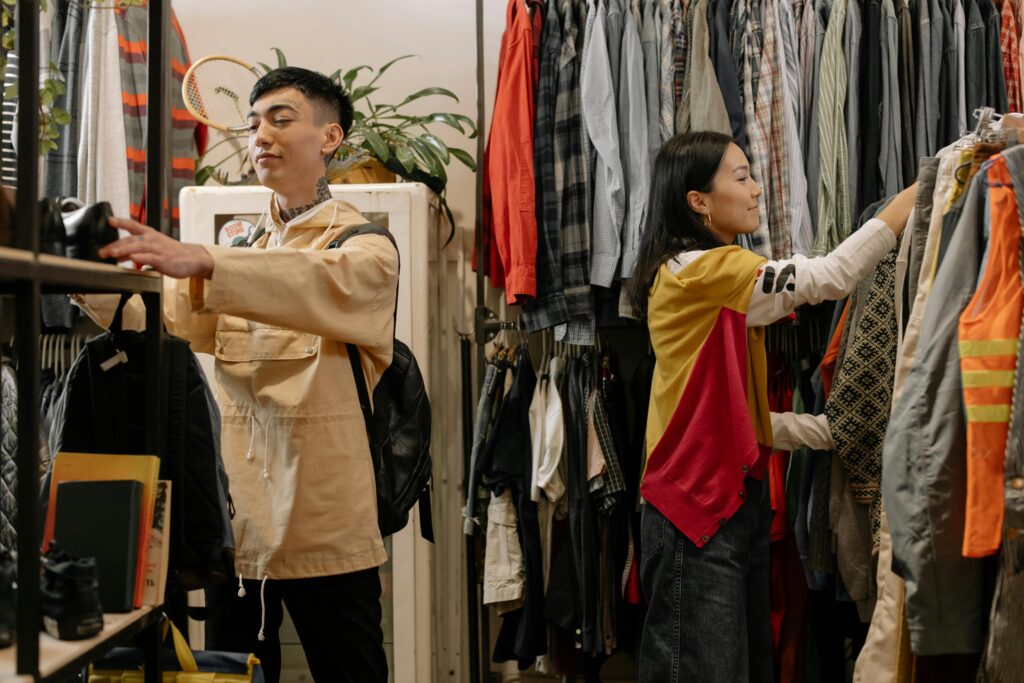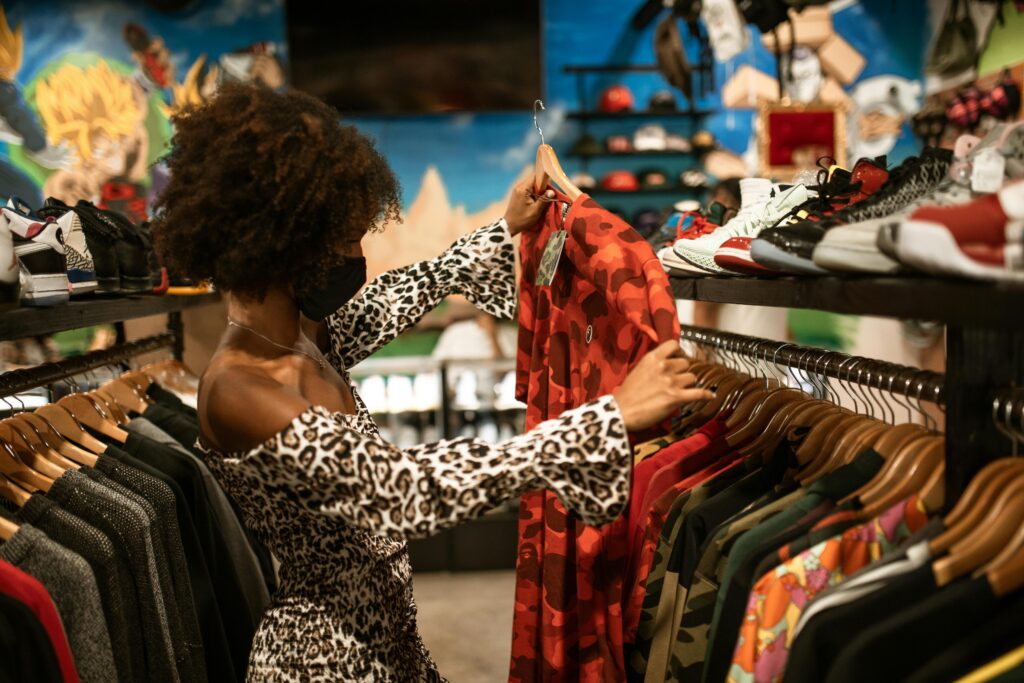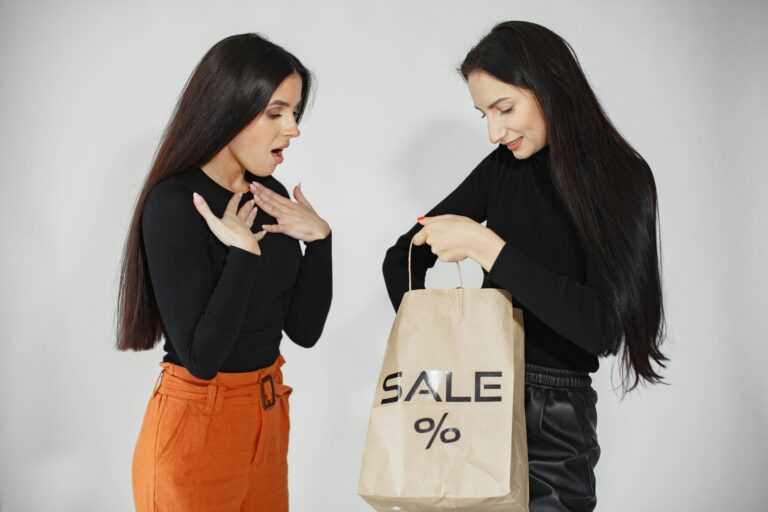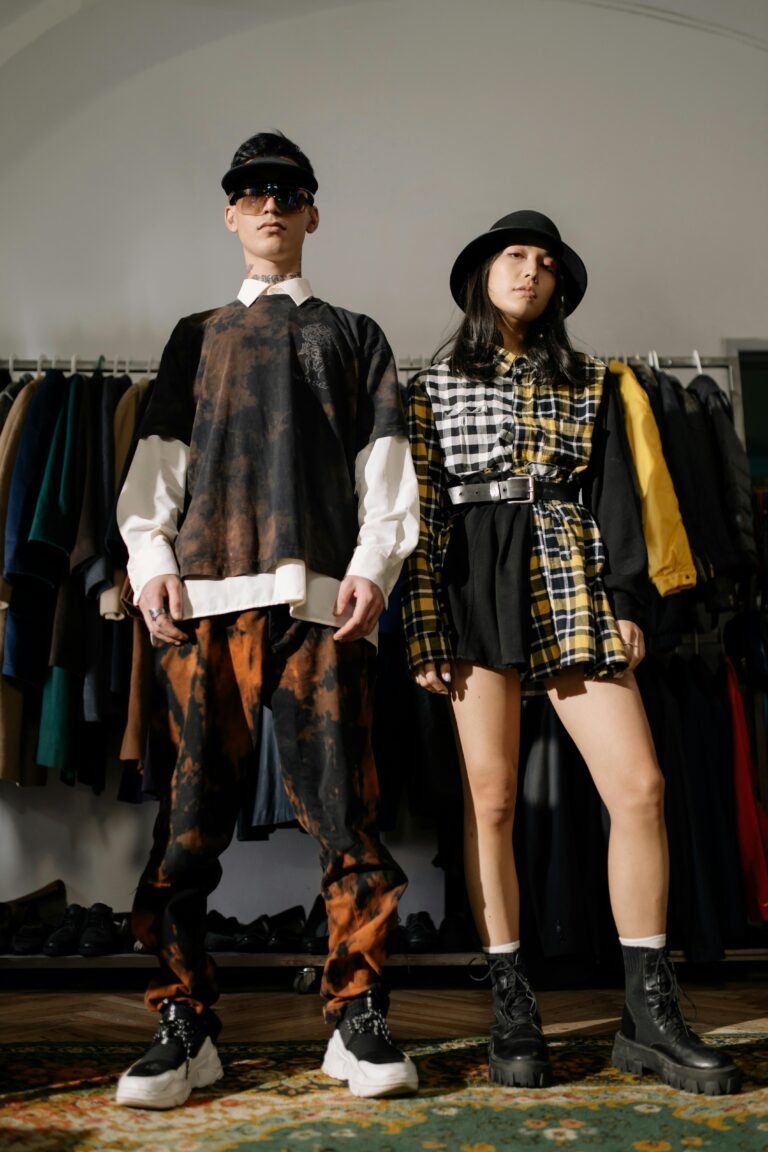Heard of No Shave November but not Second Hand September? Unfamiliar with the concept? You’re in the right place! Let’s delve into Second Hand September, a growing movement that challenges the way we think about fashion and sustainability.

Contents in this blog
- What is Secondhand September?
- Why buy Second Hand?
- How can you take part in Secondhand September?
- Beyond September: Making Second-Hand a Habit
What is Secondhand September?
Second Hand September started in the United Kingdom in 2019 as an initiative by Oxfam, the global charity focused on poverty alleviation and sustainable development. The campaign was launched to encourage people to buy only second-hand clothes for the month of September, raising awareness about the negative impact of fast fashion on the environment.
It has since grown into an international movement, with people worldwide joining to promote more sustainable shopping habits, reduce textile waste, and support Oxfam’s broader mission of fighting poverty.
Oxfam is a global confederation of charitable organizations focused on alleviating poverty, combating inequality, and promoting sustainable development. Founded in 1942 in Oxford, England, Oxfam originally aimed to provide food relief during World War II but has since expanded its mission to address the root causes of poverty and social injustice.
The premise is simple: for the entire month of September, you commit to buying no new clothes and instead shop second-hand.
Second Hand September | Oxfam GB
Why Buy Second Hand?

The fashion industry is facing a critical challenge in terms of sustainability. The industry’s negative impact on the environment is significant, and it poses a threat to the planet’s health and well-being.
Fast fashion is a major contributor to waste and pollution. The quick production and disposal of clothing create a significant amount of waste that ends up in landfills. According to the Environmental Protection Agency, in 2018, textiles accounted for 11.3 million tons of the total municipal solid waste generated only in the United States.
The fashion industry also plays a significant role in global carbon emissions, accounting for approximately 2-8% of the total. It is estimated that the industry emits about 1.2 billion tones of CO2 equivalent annually. And this number is rising year after year.
Fashion Industry Carbon Footprint: Everything You Need to Know – Green Glamour
Buying secondhand clothing provides not only affordability but also environmental benefits. Thrift stores offer a treasure trove of pre-loved garments, often at a fraction of the cost of new items. By purchasing second-hand clothing, you are giving these pieces a second life and diverting them from landfills, which helps reduce textile waste and the environmental impact of the fashion industry.
Shopping second-hand keeps clothes in circulation longer, which reduces the need for new production.
Ultimate guide to buy secondhand clothes in 2024
Exploring local thrift stores can be an adventure, providing insights into the local culture and fashion trends while allowing you to shop sustainably and affordably. Additionally, thrift stores often carry unique and vintage items that add a distinctive flair to your wardrobe.
Always remember, the first step toward sustainability in fashion is to curb overconsumption, followed by embracing second-hand choices. The most sustainable piece of clothing is the one already hanging in your closet.
How Can You Take Part In Secondhand September?
Getting involved in Secondhand September is easy, and you can do it at your own pace. Here are some tips to get started:
Go Thrifting
Find your local charity shops, vintage stores, or flea markets. You might be surprised by the range of styles, sizes, and brands you’ll discover. Online platforms like ThredUp, and Poshmark also offer second-hand shopping from the comfort of your home.
Host A Clothing Swap
Gather a group of friends or coworkers and organize a clothing swap. It’s a fun way to refresh your wardrobe without spending a dime, while also finding a new home for pieces you no longer wear.
Search For Local Events
Many towns and cities host sustainability-themed gatherings, especially during campaigns like Second Hand September, so keep an eye out for local announcements and social media updates. Search nearby there might be some local events happening, including clothing swaps, garage sales and more
Participate In Contests
Participating in contests hosted by sustainable brands or second-hand thrift stores is a fun way to engage with the eco-conscious community and potentially win great prizes. Many of these businesses hold in-store or online competitions, especially during campaigns like Second Hand September, where you can showcase your thrifted finds, share upcycling projects, or promote sustainable fashion tips. These contests not only offer exciting rewards like store vouchers or eco-friendly products but also help raise awareness about sustainable shopping practices, making it a win for both you and the planet. Currently salvation army has contest going on where you can win $100 voucher
Secondhand September | Salvation Army Thrift Store
Upcycle and DIY
Have old clothes that are a bit outdated or worn? Give them a new life through upcycling. Transform jeans into shorts, turn an oversized shirt into a dress, or add patches to a jacket. Get creative and make something uniquely yours!
9 Different Ways To Reuse Old Clothing
Spread the Word
Use social media to share your Second Hand September journey. Inspire others to join the movement by posting your thrifted finds and sharing why sustainable fashion matters to you. The hashtag #SecondHandSeptember is a great way to connect with like-minded people.
Beyond September: Making Second-Hand a Habit
Why stop at just one month? Let’s turn Second Hand September into a year-round practice. If you can commit to buying second-hand clothes for a month, why not make it a lifestyle? By continuing to shop second-hand, you’re reducing waste, conserving resources, and supporting a more sustainable future. It’s a small change that adds up, and by making it a habit, you’re actively contributing to a better world. After all, sustainability is about long-term impact, and every mindful purchase brings us one step closer.
Related Posts:
Shocking Fast Fashion Facts: The Ugly Truth You Need to Know









